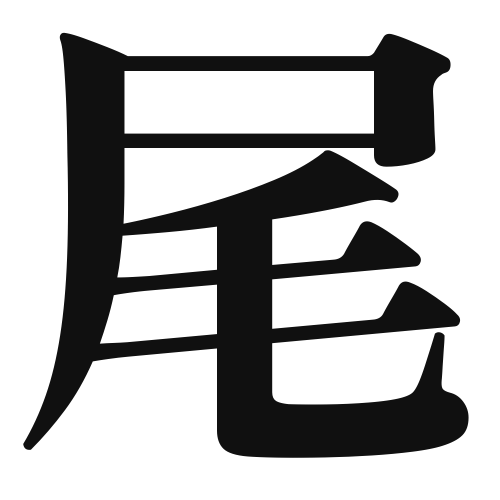1. Overview of Meaning
The kanji “尾” (pronounced “o” or “bi”) means “tail.” It refers to the rear part of an animal’s body, often used metaphorically to describe the end or conclusion of something.
2. Formation and Radical
Formation of the Kanji: The kanji “尾” is a pictogram, originally depicting the tail of an animal. It visually represents the concept of a tail, which is a distinguishing feature of many animals.
Radical: The radical for “尾” is also “尾,” which is used in other kanji related to tails or endings.
3. Examples of Usage
Common Words and Phrases:
- 尾行 (びこう, bikou) – tailing, following someone stealthily
- 尾羽 (おば, oba) – tail feathers
Example Sentences in Daily Conversation:
- 犬の尾が振られている。 (いぬのおがふられている。) – The dog’s tail is wagging.
- 彼は尾行されていると感じた。 (かれはびこうされているとかんじた。) – He felt that he was being followed.
4. Synonyms and Antonyms
Similar Kanji:
- 末 (まつ, matsu) – end, tip; refers to the end of something, but not specifically a tail.
Antonyms:
- 頭 (あたま, atama) – head; the opposite of the tail, representing the front or beginning of something.
5. Cultural and Historical Background
Relation to Japanese Culture: In Japanese culture, tails are often associated with animals and folklore, such as the mythical creature “kitsune” (fox), which is said to have multiple tails that signify its age and power.
Proverbs and Idioms:
- 尾を引く (おをひく, o wo hiku) – to have lingering effects; literally means “to pull the tail,” often used to describe consequences that follow an action.
